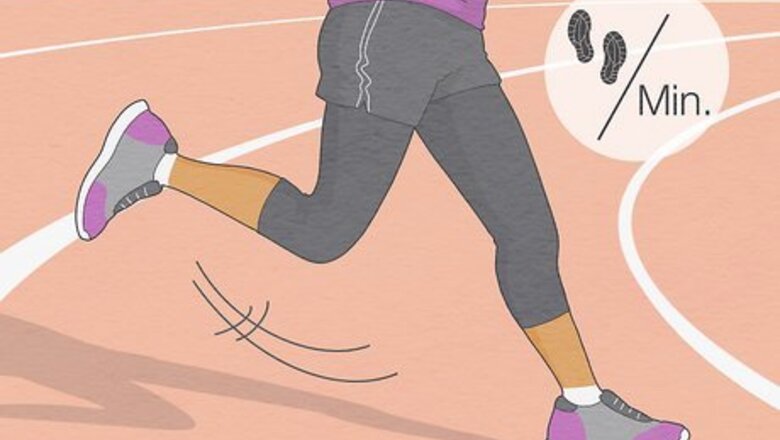
views
- Your running cadence is the number of steps you take per minute. A faster running cadence is associated with better form, efficiency, and reduced risk of injury.
- Measure your running cadence by counting how many steps you take in a minute while running, or by using a running watch or foot pad.
- Increase your running cadence by practicing sprints, focusing on keeping your torso upright, and listening to high-BPM music or a digital metronome.
What is running cadence?
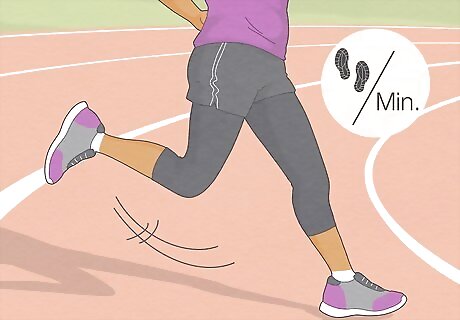
Your running cadence is the number of steps you take per minute. In other words, it’s your stride rate, or many steps it takes you to cover a certain distance. Many runners use running cadence as a loose indicator of their efficiency; studies have shown that faster cadences use less energy and reduce the risk of injury while running. A faster cadence has been linked with fewer hip and knee injuries, since the increased stride rate makes for less impact force on the knees and better aligned hips.
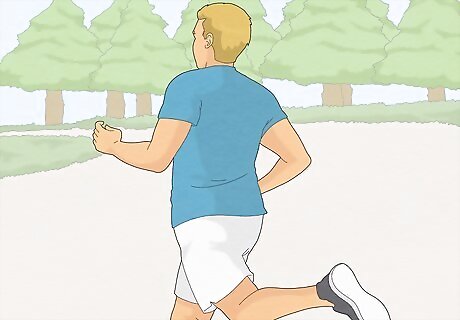
Running cadence is different for every runner. It makes sense—tall people have longer legs, which makes for longer strides, which mean a lower natural running cadence. The reverse is true for shorter people, whose naturally shorter strides make for a higher running cadence. There’s no correlation between a runner’s sex, age, or weight and their cadence.

Running cadence varies by distance and event. Sprinters will naturally have higher cadences while they sprint, since their feet are hitting the ground at a faster rate. Similarly, long-distance runners tend to have slower cadences, since they’re focusing on pacing themselves for the long haul. On top of that, your own running cadence will probably vary as you participate in different events with different physical demands.
What cadence should I run at?
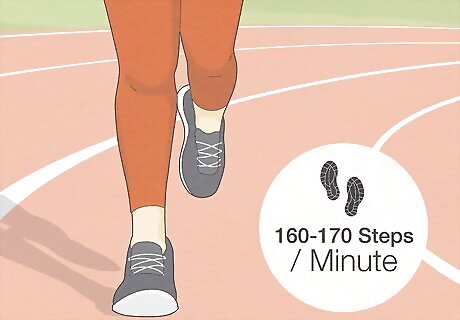
Aim for a cadence of 160-170 steps per minute. In general, people who run a mile in fewer than 10 minutes should aim for a cadence of 160, while people who run a mile in more than 10 minutes should aim for a cadence closer to 170. Keep in mind that these numbers are in no way definite or certain for every runner, though! They’re simply a useful target to help you improve your own cadence.
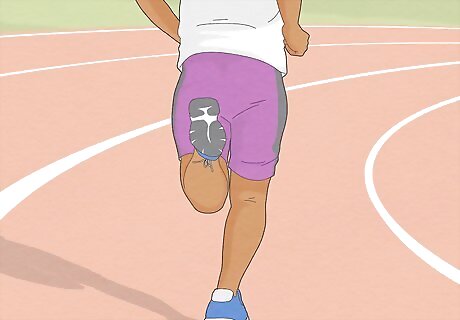
Remember that there's no universal or ideal running cadence. Traditionally, the target or “goal” running cadence used by coaches and trainers was about 180 steps per minute. While this is an admirable target, recent studies and research suggest it shouldn’t be a catch-all number for every runner and every event. Instead, focus on achieving a cadence that feels natural and comfortable for you. It’s true that the average cadence of many top runners is around 180, but the variation of these runners’ cadences is drastic, ranging from 155-203. Which is to say, don’t regard the average as your own personal target; even top runners have varying cadences.
Measuring Your Cadence

Count how many steps you take while running for 60 seconds. Set a timer on your watch or on your phone for 1 minute. Then, start the timer at the same moment you begin running. As you run, count your steps, and stop counting when the timer goes off. However many times your feet hit the ground in that minute is your running cadence. Sometimes, cadence is counted or described on a single foot, meaning a cadence of 180 might also be described as a cadence of 90—the former describes the cadence of both feet, while the latter describes the cadence of a single foot.
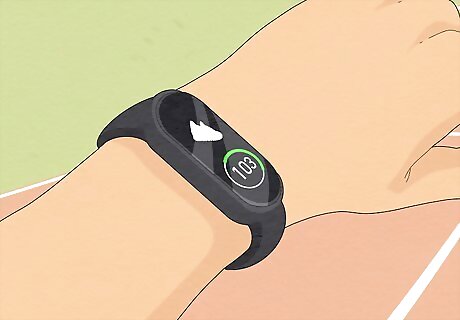
Use a pedometer or fitness tracker. There are a number of fitness trackers on the market that measure things like your heart rate, distance run, pace, and of course, cadence. Purchase a cadence-tracking fitness tracker if you want to keep a closer eye on your cadence.
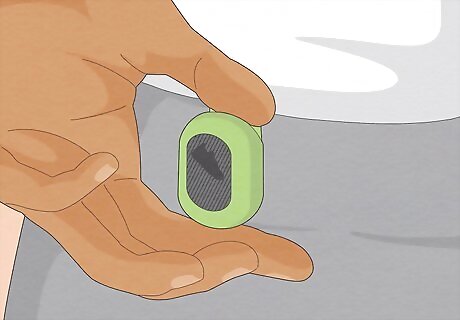
Use a foot pod. A foot pod is a small device that you attach to your shoe. The pod then syncs to your phone to transmit all kinds of data, like distance and cadence. As you prepare for your run, place your foot pod on the same location of your shoe each time you run (like attached to your shoelaces), and follow your particular product’s instruction manual to calibrate and use it.
Improving Your Cadence
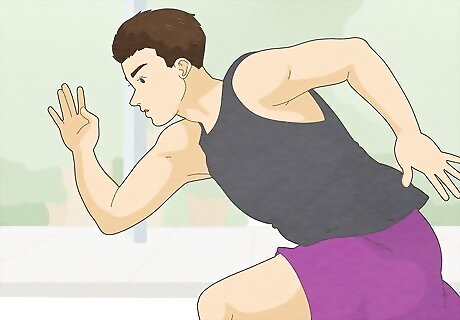
Begin or end each run with a short sprint. As you take off or wind down, run as fast as you comfortably can for about 8-20 seconds. This builds a habit of faster, shorter strides, which over time will translate to a generally faster running cadence as your body learns to incorporate this pace into your everyday runs.

Swing your arms more rapidly as you run. Running is a full-body motion, and what happens up top tends to translate and synergize with what’s happening with your legs down below. As you run, focus on moving your elbows backwards and forwards at a faster speed than you might normally. Then, let your legs catch up with the pace your arms have set, or make an effort to match them. In addition, keep your elbows bent at a 90-degree angle, and focus on swinging your arms from the shoulder joint, rather than having your forearms propel the motion.

Straighten your torso and position your steps beneath your body. Leaning forward tends to encourage longer strides, since your center of balance moves to the front and your legs move to accommodate that balance. Instead, focus on improving your posture—keep your torso straight above your hips, and focus on stepping on the ground immediately below your hips. This encourages shorter strides. To help encourage shorter strides, imagine you’re running across lava! Take brief, quick steps to avoid burning the soles of your feet—It might seem silly, but it can help trick your brain into making consistently shorter and snappier steps.

Listen to a metronome or music at a higher BPM. As you run, use your phone to listen to a digital metronome (there are a number of apps for just that) or listen to music that has the same BPM (beats per minute) as your target cadence. Your body tends to automatically synchronize with the rhythm (but you may have to consciously adjust), and as a result your run cadence will become faster.
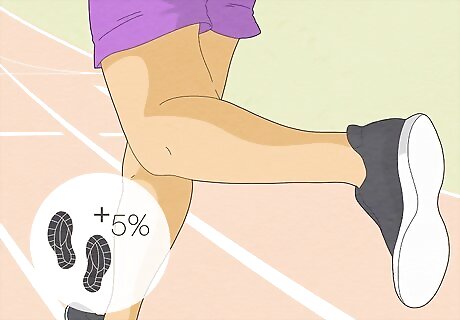
Improve your cadence in 5% increments. Avoid making dramatic changes too soon, which can result in poor form or even injury. Instead, make small, gradual changes to your cadence. For example, if your running cadence is about 140, rather than trying to jump straight to 170, aim for a cadence like 145-150, which will result in a more comfortable and natural transition.














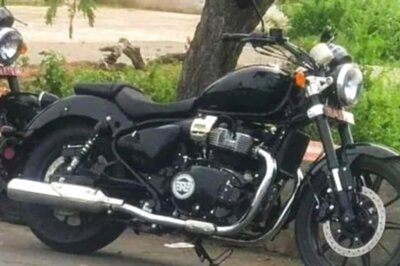



Comments
0 comment